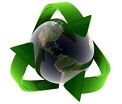Revolution Bag
We are a proud Distributor of REVOLUTION BAGS
Revolution Bag is the first company to provide a complete line of EPA-compliant trash can liners that don't cost more and perform just as well as bags produced with virgin resin. Now you can meet EPA mandates, capture LEED points and get a really great bag in the process. With Revolution Bag, the decision to go green is really no decision at all.
So how does Revolution Bag do what no one else has been able to do? It starts with our supply of post-consumer materials -- a virtually endless quantity of consistent, high quality raw materials for recycling provided by our parent company Delta Plastics. This resource is coupled with patented washing and processing technology that enables us to take this post-consumer material which would otherwise end up a landfill and produce high quality bags at competitive prices.
|
Here is a current list of relevant certifications and green credentials:
|
||
|
|
||
|
||
|
|
||
|
||
|
|
||
|
||
|
|
||
|
WHITTCO Industrial Supply Sustainability Letter 
SUSTAINABLITLY
Don't Throw Away LEED Points
Even the best recycling programs cannot completely eliminate trash.
But, with environmentally-friendly trashcan liners, you can still gain Leadership in Energy and Environmental Design (LEED) points on what has to be thrown away.
LEED points can be earned by purchasing sustainable cleaning products and materials including disposable plastic trashcan liners that meet the specifications outlined as a part of the LEED Environmental Quality (EQ) credit 3.4 to 3.6, as well as the U.S. Environmental Protection Agency''s (EPA) Comprehensive Procurement Guideline (CPG) program.
Sounds like an easy choice for facility managers: Use recommended liners to help you earn one LEED point and reduce a building''s environmental impact while increasing goodwill for the company in the process.
But, how do you know what liners qualify — and what about the cost and functionality of these bags?
Let''s consider those points one at a time.
What Makes A Worthy Liner?
A LEED point can be earned in part by purchasing trashcan liners that meet the EPA''s CPG for the recommended post-consumer recycled content level of the liners — 10 to 100 percent.
The amount of recovered materials used for trashcan liners affects the color, size and thickness of the bags.
The recovered or recycled content used in trash bags can include high-density polyethylene (HDPE), used to make everything from laundry detergent containers to Hula Hoops; low-density polyethylene (LDPE), widely used for various containers, bottles and bags; and linear low-density polyethylene (LLDPE), used for many things including plastic bags, plastic wrap and flexible tubing.
Simply put, if your trashcan liners are EPA-compliant, it will help you earn one LEED point for the “purchase of sustainable cleaning products and materials.”
If you can''t easily find information about the fact that your bags are EPA-compliant on the specifications sheet or box, chances are your bags are non-compliant.
Will It Cost More To Go Green?
Going green can actually save you money in many cases.
While it''s true that electricity from renewable sources remains more expensive than from traditional sources, there are also many cost-saving advantages of going green.
For instance, purchasing energy-saving products can reduce energy bills, while going paperless when possible can help you save money on paper and ink and produce less trash.
Often, the decision to buy a specific brand of trashcan liner is based on what''s the least expensive option.
Liners come in different sizes, gauges and colors, but many might assume the bags are basically all the same.
However, thanks to advances in recycling technology, facility managers can now choose from a few fundamentally different types of bags at a similar price point.
There are EPA-compliant bags — made with 10 to 100 percent post-consumer content — on the market today that won''t cost you more than typical virgin resin bags and are actually lighter and stronger than many non-compliant bags.
When you have the ability to “go green” and “save green,” the LEED point is simply icing on the cake.
Are EPA-compliant Bags As Strong As Others?
Equally as important as price, strength is a prime consideration when choosing trashcan liners.
After all, it really doesn''t matter what the price is if the product fails.
For decades, the gauge or thickness of the liner film was the primary method used for judging the overall strength of bags.
But, thanks to enhancements in the post-consumer resin industry, thinner, lighter trashcan liners can now be produced that are stronger and more durable than some of the thicker non-compliant bags of the past.
The raw material of these new bags, LLDPE resin, is simply more resistant to punctures and tears than the weaker, heavier raw material still being used by some bag manufacturers.
The old test of sticking your finger through the film actually has minimal bearing on the true quality or performance of a bag.
Many times, the liners using the newer LLDPE resins are less than half the thickness of liners previously made from low-density resin; this explains why gauge is no longer the best way to determine the strength of trashcan liners.
Most in the industry now use standard strength ratings like “light,” “medium,” “heavy” and “extra heavy” instead to signify a bag''s overall strength.
Because each liner manufacturer blends raw materials differently, the makeup of the product can vary between different companies.
With this in mind, it''s always a good idea to test liner samples yourself; try them out and see if the weight, thickness and strength are a perfect fit for your specific need.
Of course, you won''t earn LEED certification for a building with the use of EPA-compliant trashcan liners alone, but every point counts.
If the cost, strength and functionality of EPA-compliant liners are comparable to non-compliant bags, just ask yourself, “If given a choice, is there any reason not to use EPA-compliant liners?”


